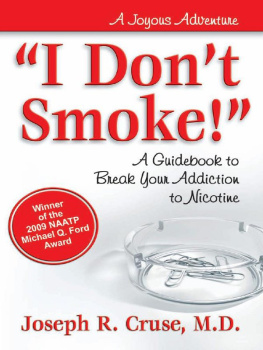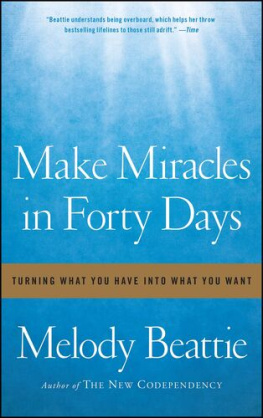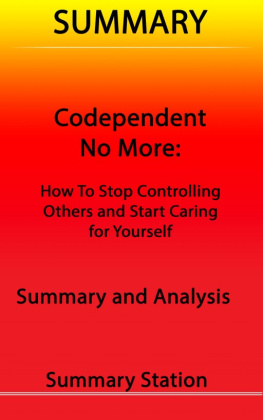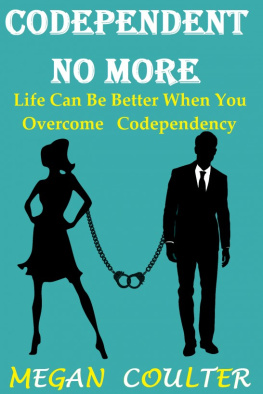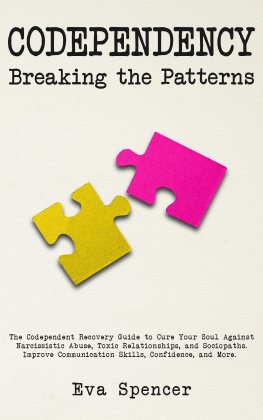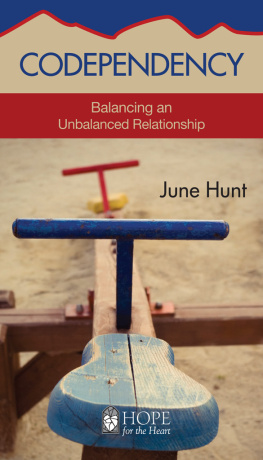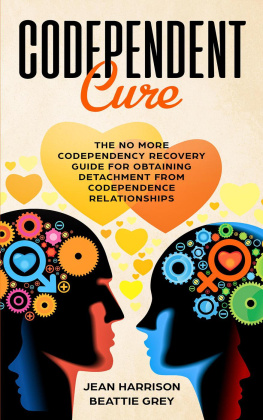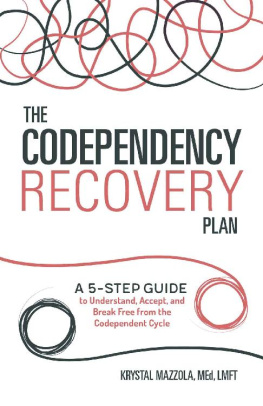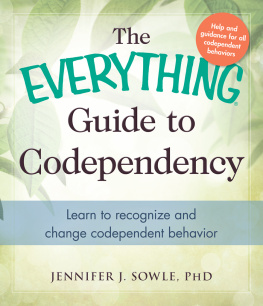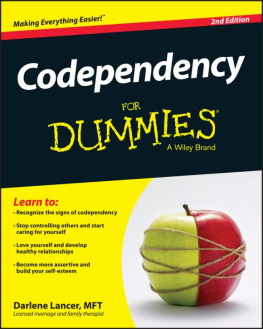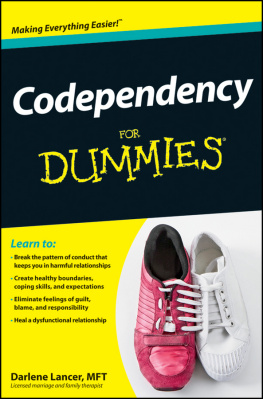

Health Communications, Inc.
Deerfield Beach, Florida
www.hcibooks.com
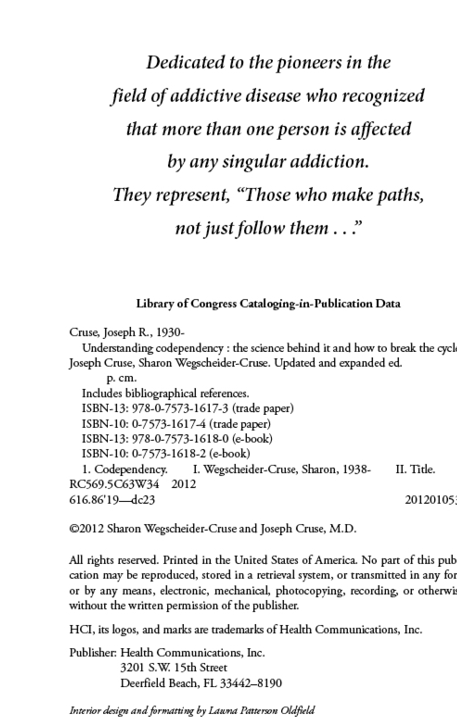
CONTENTS
Introduction to the Second Edition
:
Codependency and the Brain
:
The Codependency Trap
:
Personality and the Progression into Disease
:
Symptoms of Codependency: Brain Events
:
Complications of Codependency: Life Events
:
Sorting Out Codependency
:
Treatment and Recovery
:
Recovering Alcoholics and Addicts
:
Self-Assessment
:
Study Group Guidelines

Codependency
and the Brain
Until the 1970s, most of the research interest in addictive diseases, especially alcoholism, centered on the liver. Investigators felt that if the reasons for the serious impact that alcohol had on the liver were known, the basis for alcoholism would become clear. University researchers and government agencies received grants to carry out investigations that centered on the liver. Psychologists, psychiatrists, and other therapists were caught up in psychodynamics, behavioral therapy, psychoanalysis, and other theories of the mind in an effort to help those addicted to alcohol and other drugs.
Brain Functions
Meanwhile, brain researchers discovered previously unknown chemicals, functions, and anatomical relationships in the brain that affected the thoughts, behaviors, and feelings of individualsthe same mind-related entities that the psychiatric, psychological, and therapeutic disciplines had been struggling to understand for centuries. A collision course between the various disciplines became inevitable. Brain chemistry, real-time scanning, and other imagery revealed some of the close relationships between the brain and addictive, compulsive behavior. A fusion bomb of research exploded, and the fields of psychiatry, psychology, and behavioral medicine zeroed in on the brain. Dr. Mark Gold, professor of psychiatry at the University of Florida, College of Medicine, happily announced, The field of psychiatry finally has an organ to work with!
Organs have one or more functions in the body. The pancreas is an example of an organ that performs at least two major functions: it manufactures digestive juices and it manufactures and releases insulin and other chemicals that our bodies need to work efficiently. If we looked at the brain metaphorically in terms of its functions, we could describe it as the thinker or the mind, the doer, the behaver, the feeler, and the pleasure seeker, among others. These functions are more difficult to measure than most other organ functions. For example, it is easy to measure urine output and composition as an indicator of kidney function. It is more difficult to exactly measure a thought or the emotions of joy or anger.
Pleasure/Relief Center
We are still learning the various outputs and composition of the brain and how they affect what the body does. There is a pleasure center (which could also be referred to as a relief center) in the brain that is primarily involved in setting up pathways that result in addiction and addictive behaviors. This center receives and sends its messages (commands) up, around, down, and all over the body thousands of times per second on thousands of pathways. If we could light it up, its activity would dwarf the busiest streaming decorative digital billboards in Times Square or on the Las Vegas Strip.
The brain has a multitude of different centers for many different functions. Rather than describe all of these centers, their locations (anatomy), and the chemicals (neurotransmitters, hormones) and nerves that serve them, it is simpler to just use the concept of pathways that the brain uses to communicate with itself and the rest of the body. These pathways are used over and over again for a variety of functions.
New pathways are constantly created; old pathways stay lit as long as they are used; inactive brain pathways can be dimmed, but probably never completely disappear, because some old pathways can be easily reignited.
Creating, dimming, and reigniting pathways occur constantly in the brain thousands of times a second. The brain is thinking up, forgetting, and remembering at breakneck speeds all day long: one hundred billion nerve cells, one hundred trillion connections, and hundreds of feel-good chemicals that are released into the body indicate that our marvelous brains can do all of this.
The pathways that are formed in our brains throughout life as we live and learn in the midst of our experiences influence how we respond to the world around us. But our brains can mislead us. Why do our brains tell us we have to have a certain outcome, a certain relationship, a certain food or amount of food, and/or a certain sense of power and reputation, when many times we dont? Every time we find relief or pleasure, a pleasure pathway is brightened up. Even when it is at our own expense in some way, our pleasure centers are stimulated and our brains now say, Do it again and again and again. Dont stop, or I will make you so uncomfortable that you will feel withdrawal, anxiety, sadness, loneliness, and pain.
Every time we are rewarded for something we have done or have sacrificed some aspect of our lives for another persons benefit (whether they needed it or not), our brains send out the same message: This is great! Get me more, more, more! Dont stop, or I will send you into letdown/withdrawal! (For a graphic example of this, see Figure 2.1 in Chapter 2, The Codependency Trap, on page 32.)
The more people focus outside of themselves for their self-worth, and the longer their codependent life continues, the brighter the codependent pleasure/relief pathways become. These pathways can be dimmed and lose their power when a person begins recovery. To remain turned on, pathways require steady exposure (the timing and amounts of exposure required vary among individuals). To remain turned down, addictive pleasure pathways require abstinence. When codependent people abstain from whatever behavior they have been using to avoid pain (alcohol, drugs, food, etc.), they have the ability to recover, as long as they continue to remain abstinent.
It is helpful to understand how these pathways in the brain work as you undertake your own recovery:
- New pathways (recovery pathways) are created by constructive new thoughts, events, behaviors, and emotions.
- Dimmed pathways (recovery) can occur by not reinforcing an already existing pathway.
- Reignited pathways (relapse) can recur from old codependent thoughts, events, behaviors, and emotions.
Suggested Progressive
Mental Disorders
Codependency can be a precursor to other distinctive, perhaps addictive, disorders. It can evolve into full-blown, discreet, diagnosable mental health issues. Codependency increases in its intensity, and it begins to purify itself into more serious, specific sets of repetitive behaviors and symptoms. Some of these become recognizable personality disorders or other mental health disorders.
We are all born with personalities, and they are each as unique as our fingerprints. While there are many wonderful components of personality, mental disorders can evolve from some personality traits. Traits can protect us and be useful to us when they are not used excessively. Three traits that are sometimes useful to us but are frequently used to excess by codependents are our avoidant, dependent, and obsessive-compulsive traits .
Next page

